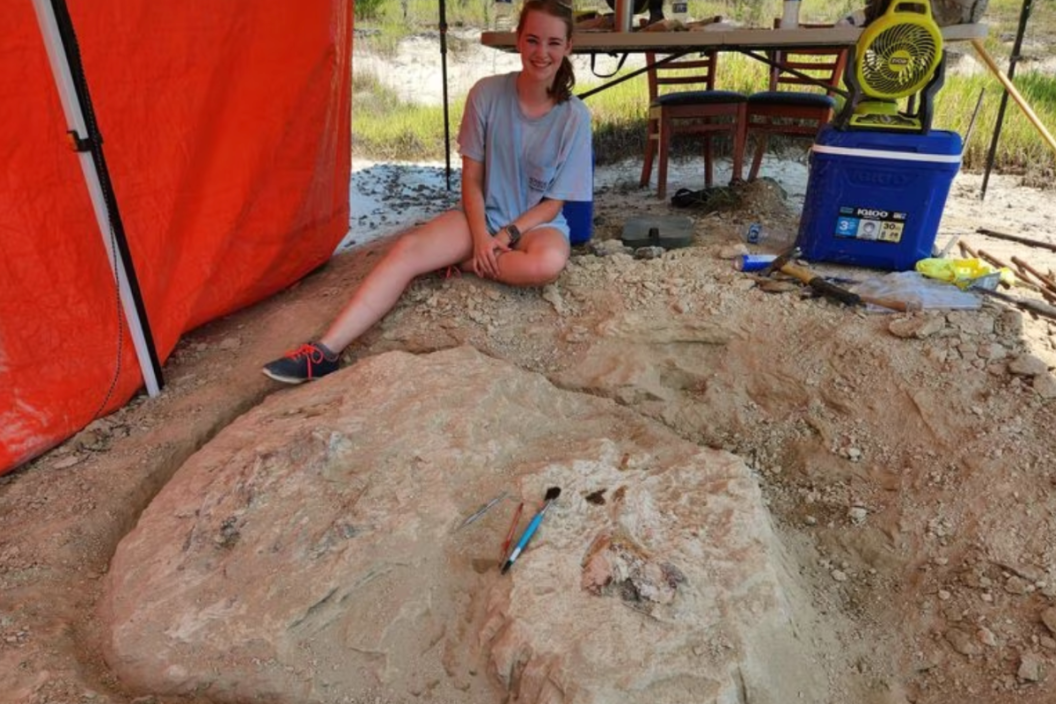Alabama School of Math and Science senior Lindsey Stallworth made a monumental discovery while fossil hunting on her family's land this summer. Stallworth and her family often searched for fossils and shark teeth on the property, but having a biology class with ASMS science teacher Drew Gentry has led her to dig deeper.
"My family mainly looks for different types of shark teeth, but we are realizing now that there was a lot of stuff we've never recognized was there," she said. "And it's getting a whole lot more interesting."
Gentry is also a paleontologist. While the pair were digging, they discovered a fossilized whale skull that has been estimated to be 34 million years old. They also believe that the fossil may belong to a previously undiscovered species.
"We saw something, and we were like, 'Oh my gosh, what is this?'" Stallworth said to AL.com. "And once we started digging into it and looking, we slowly realized what we had actually found."
The fossil is the skull portion of an ancient whale believed to swim in the shallow seas that covered most of south Alabama millions of years ago.
Gentry has discovered two new species of turtles from fossils found in Alabama and helped locate, identify, and remove the skull from the hillside.
"We actually spent probably the better part of a week digging very slowly on it with dental picks and small hand tools until we uncovered most of the lower jaw," Gentry said. "And associated with that lower jaw was a very large tooth. As soon as that tooth became visible, we were able to determine that we had found a fossil whale."
The discovery became a summer project for Stallworth and Gentry. They excavated the skull and moved it to ASMS' new paleontology laboratory. Gentry said the whale seems to be a smaller relative of the Basilosaurus cetoides, Alabama's state fossil. The ancient whale is 50 to 60 feet long. However, it could also be a relative of the zygorhiza, a whale found in Alabama, Louisiana, and Mississippi.
There's also a third option. Gentry said, "It has the potential to be a new species, yes, especially considering the time period that this whale is from." He estimates that the full skeleton is between 15-20 feet long. They will continue the excavation next summer, but it may take years to dig out the entirety of the fossil if it's all there.
For now, Stallworth and Gentry will clean, study, and preserve the skull.
"I already loved biology, and I had originally wanted to be a marine biologist," Stallworth said. "But this is more like marine paleontology because what we see is from the ocean. So it's still really interesting, and I'm seeing what I want to study now, what would it have looked like 34 million years ago?"




